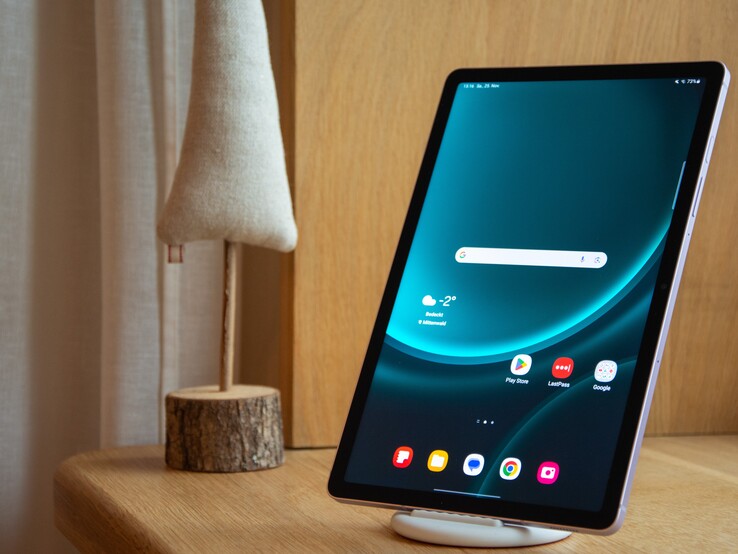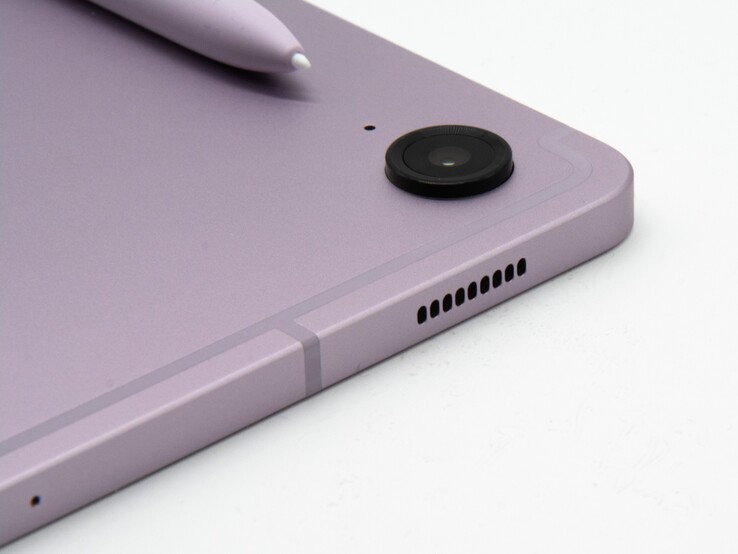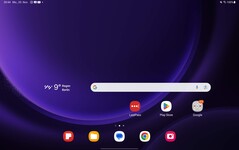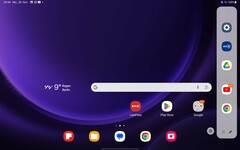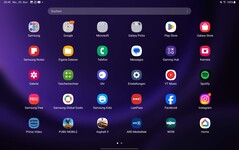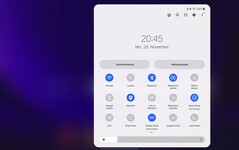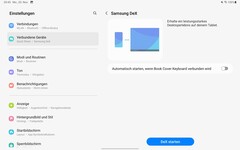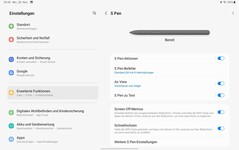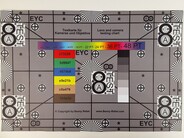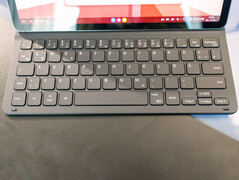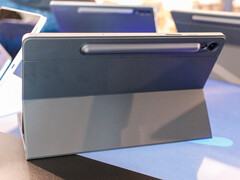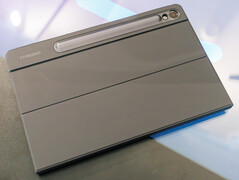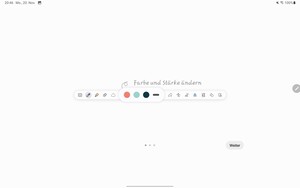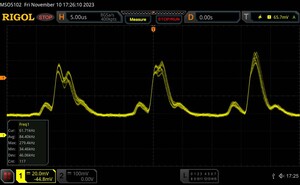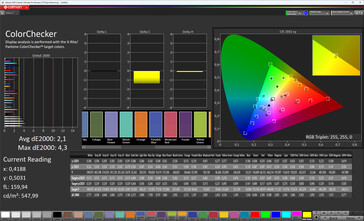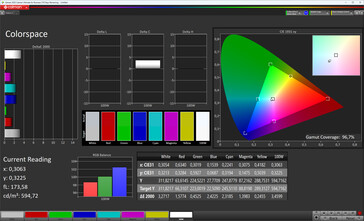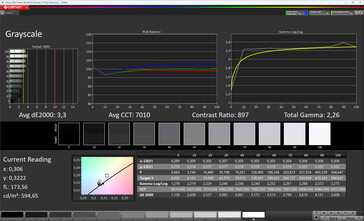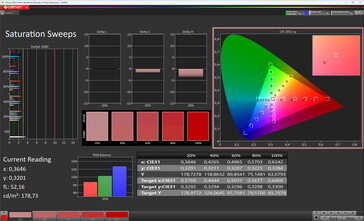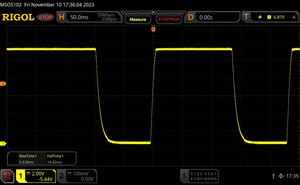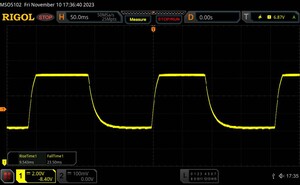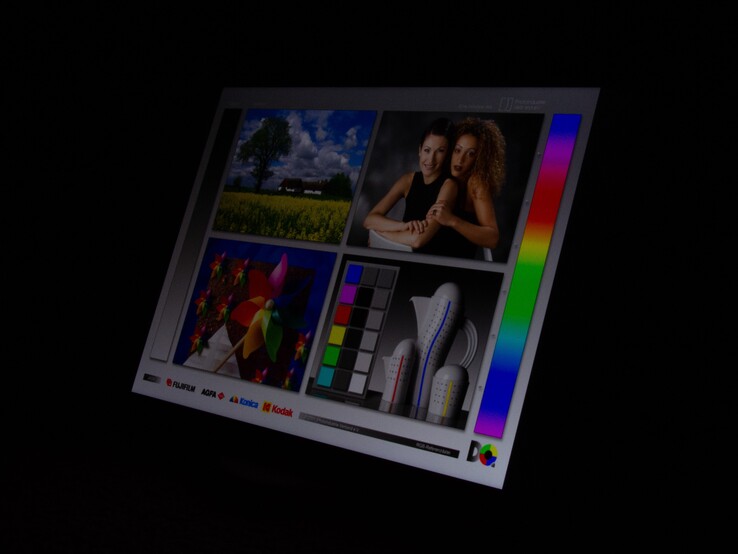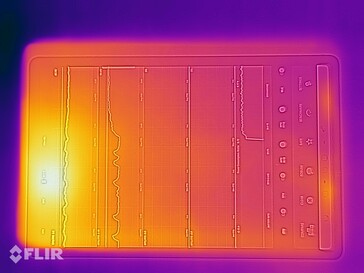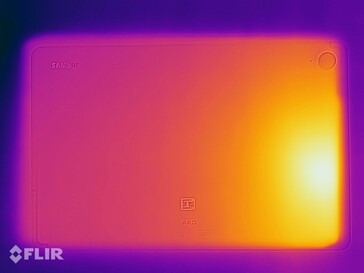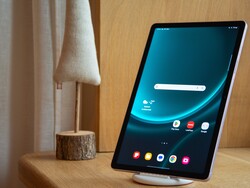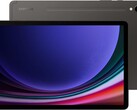Samsung Galaxy Tab S9 FE Tablet in review - The gap filler
Following the standard tablets in the Galaxy Tab S9 series, available in three sizes, Samsung has now introduced the Fan Edition of the series. The Samsung Galaxy Tab S9 FE features a 10.9-inch display, while its larger variant, the Galaxy Tab S9 FE+, boasts a 12.4-inch panel. The FE series comes with a slightly more budget-friendly price tag, but compromises are made in terms of features, such as the display and performance.
The Galaxy Tab S9 FE is offered in both WiFi and 5G versions, and it comes in four different colors: grey, silver, mint, and lavender (pink). Samsung provides two storage options: one with 6 GB of RAM and 128 GB of storage space, and another with 8 GB of RAM and 256 GB of storage space. The Plus model offers 8 or 12 GB of RAM with the same memory options. Our test device has a smaller memory, lacks a SIM connection, and comes in Lavender.
It's worth noting that Samsung did not release a Galaxy Tab S8 FE. As a result, the direct predecessor is the Galaxy Tab S7 FE, which was only available in one size with a 12.4-inch display.
Potential Competitors in Comparison
Rating | Date | Model | Weight | Height | Size | Resolution | Price |
|---|---|---|---|---|---|---|---|
| 86.8 % v7 (old) | 11 / 2023 | Samsung Galaxy Tab S9 FE Exynos 1380, Mali-G68 MP5 | 524 g | 6.5 mm | 10.90" | 2304x1440 | |
| 90.9 % v7 (old) | 10 / 2023 | Samsung Galaxy Tab S9 5G SD 8 Gen 2 for Galaxy, Adreno 740 | 500 g | 5.9 mm | 11.00" | 2560x1600 | |
| 88.8 % v7 (old) | 08 / 2023 | Xiaomi Pad 6 SD 870, Adreno 650 | 490 g | 6.51 mm | 11.00" | 2880x1800 | |
| 89.7 % v7 (old) | 12 / 2022 | Huawei MatePad Pro 11 2022 SD 870, Adreno 650 | 449 g | 5.9 mm | 11.00" | 2560x1600 | |
| 89.3 % v7 (old) | 09 / 2023 | Google Pixel Tablet Tensor G2, Mali-G710 MP7 | 493 g | 8.1 mm | 10.95" | 2560x1600 | |
| 88.6 % v7 (old) | 11 / 2022 | Apple iPad 10 A14, A14 Bionic GPU | 477 g | 7 mm | 10.90" | 2360x1640 |
Case - Galaxy Tab S9 FE with IP68 protection
For the Galaxy Tab S9 FE, Samsung uses an aluminum shell that is only split on the short edges to accommodate the antenna strips. Even though they are a little broader than those of the Galaxy Tab S9, the display corners are level. Corning Gorilla Glass 3 provides good protection for the display. With its IP68 rating, the tablet is protected from dust and water infiltration.
The integrated buttons provide a positive pressure point and are securely embedded in the housing. The tablet remains stable enough to be utilized for data entry when resting on a table, even with the large protrusion of the back camera. There is a small creaking sound when the case is forcefully twisted. Still, the construction quality is excellent, with seamless transitions and no obvious flaws.
Connectivity - Only USB 2.0 in the Galaxy Tab S9 FE
Samsung continues to embrace memory expansion through a microSD card for the Galaxy tablets. However, the USB port is a USB-C 2.0. The port is compatible with the exFAT format, but NTFS is only supported for reading, and image output is not possible. The tablet recognizes external hard drives, such as an M2.SSD, only if they are externally powered.
The Galaxy Tab S9 FE supports Bluetooth 5.3 and DRM Widevine Level 1. It features Infrared, NFC, and a jack connection. Samsung includes an active stylus with the tablet, known as the S-Pen. However, the FE version of the S-Pen lacks Bluetooth functions. Unlike the Galaxy Tab S9, the FE model also does not include a vibration motor.
microSD card reader
The memory of the Galaxy Tab S9 FE can be expanded with a microSD card, supporting cards up to a size of 1 TB, including the exFAT standard. In our copy test with an AV PRO microSD 128 GB V60 reference card, the Galaxy Tab S9 FE achieved a transfer rate of 58.36 MB/s, outperforming the standard Galaxy Tab S9.
| SD Card Reader - average JPG Copy Test (av. of 3 runs) | |
| Samsung Galaxy Tab S9 FE (Angelbird AV Pro V60) | |
| Samsung Galaxy Tab S9 5G (Angelbird AV Pro V60) | |
Cross Platform Disk Test (CPDT)
Software - Samsung with long update support
The Galaxy Tab S9 FE comes with Android 13, and Samsung uses its own One UI 5.1.1 on it. The tablet will receive four years of major updates and five years of security updates, although these are only delivered quarterly for tablets.
Many Samsung apps are installed ex-works, as well as software from Google and Microsoft. As delivered, 29 GB of storage space is already occupied. The Fan Edition of the tablet also comes with Samsung DeX, putting the device into desktop mode, which should increase productivity.
Samsung also offers some customizations for pen operation, supporting handwritten notes and sketches.
Communication and GNSS - Galaxy Tab S9 FE currently without satellite connection
The Samsung Galaxy Tab S9 FE supports Wi-Fi 6, and we measured the transfer speeds with our reference router, the Asus ROG Rapture GT-AXE11000. The tablet doesn't have to hide in comparison; it's speedier than the Apple iPad 10, for example, but not as fast as the Galaxy Tab S9. The connection is established quickly and is quite stable.
We had problems with the satellite connection in the test. According to the producer, the tablet should be able to establish a connection with all known satellite systems, but it did not. Many users currently seem to have this problem. We are still waiting for a statement from Samsung.
| Networking | |
| iperf3 receive AXE11000 | |
| Samsung Galaxy Tab S9 5G | |
| Xiaomi Pad 6 | |
| Google Pixel Tablet | |
| Samsung Galaxy Tab S9 FE | |
| Apple iPad 10 | |
| Huawei MatePad Pro 11 2022 | |
| iperf3 transmit AXE11000 | |
| Samsung Galaxy Tab S9 5G | |
| Huawei MatePad Pro 11 2022 | |
| Xiaomi Pad 6 | |
| Apple iPad 10 | |
| Samsung Galaxy Tab S9 FE | |
| Google Pixel Tablet | |
Cameras - Galaxy Tab S9 FE overwhelmed in the dark
Unlike the Galaxy Tab S9 FE+, the smaller Galaxy Tab S9 FE only has one camera on the back, which has a maximum resolution of 8 MPix. A 12 MPix camera is used on the front. The camera app is clearly laid out but still offers a Pro mode. However, only the white balance, light value, and ISO can be changed in this mode.
There are differences between the two cameras when it comes to video. The selfie cam can record at a maximum of UHD and 30 FPS, while the rear camera can record at a maximum of FHD and 30 FPS. White balance, EV, and ISO can also be changed in Video Pro mode.
The app also offers a mode for night, food, panorama, and slow-motion shots. Samsung also provides an "AR zone" for AR stickers and AR emojis. "Bixby Vision" is Samsung's counterpart to Google Lens.
The image quality is fine in good lighting conditions. However, the images lack detail. In low light, textures disappear, and some areas are so dark that they are barely recognizable. Zoom shots are usable at 2x zoom, but the software overdraws the images considerably at higher zoom levels. More than four times zoom is not possible with the tablet, which also applies to our comparison images.
The color deviation of the images is good in bright light. In low light (1 lux), the camera is overwhelmed, and image content is not recognizable.
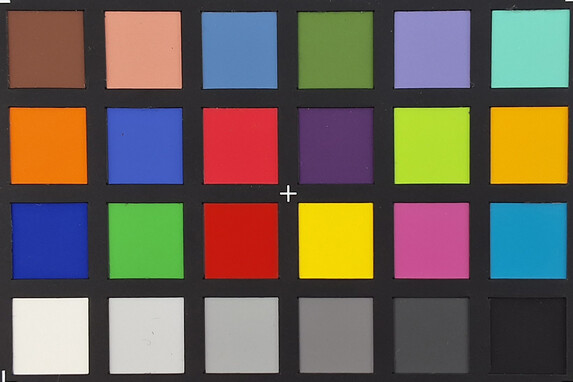

Accessories and warranty - Samsung offers plenty of accessories
The Samsung Galaxy Tab S9 FE comes with a USB cable (USB-C on both sides), a quick start guide, a SIM tool, and a color-coordinated S Pen. It offers various cases and keyboard covers as accessories. These are connected to the tablet via the docking port on the underside.
Samsung offers a 12-month warranty on the Galaxy Tab S9 FE. The manufacturer also offers Samsung Care+ for the device.
Input devices & Operation - S-Pen included
Samsung relies on its own Samsung keyboard for the Galaxy Tab S9 FE. Inputs are reliable in both portrait and landscape formats. The gliding properties of the display are generally very good. The pen integration is excellent. Tutorials show how to use the stylus in the UI and various Samsung apps.
It uses a fingerprint reader in the power button on the Galaxy Tab S9 FE. All you need to do to unlock the device is place your finger on it. The sensor works reliably, but it sometimes takes a second for the screen to be activated. Because there is no haptic feedback for recognition, it is sometimes unclear whether the finger has been recognized.
However, with sufficient illumination, a double tap on the display is usually enough to activate the face unlock function, skip the lock screen if desired, and unlock the device. This works reliably and quite quickly - but only if there is enough light.
Display - Galaxy Tab S9 FE without OLED, but nicely bright
There is a significant difference between the Galaxy Tab S9 and S9 FE when it comes to the display. This is because the producer uses a 10.9-inch LCD display instead of an OLED panel in the FE version. However, the Apple iPad 10 and the Google Pixel tablet also use this technology. The screen of the Galaxy Tab S9 FE boasts the best maximum brightness in our measurements. We measured an average brightness of 694.7 cd/m². The illumination of 88% is good for an LCD display and is not noticeable in everyday use.
We achieved these values with the ambient light sensor activated. The tablet also achieves a very good 630 nits with the sensor deactivated. The minimum luminance is 6.23 cd/m². We did measure screen flickering on the Galaxy Tab S9 FE, but fortunately, it has a very high frequency. The display only flickers at an illumination of less than 13 percent.
The display can play content at up to 90 Hz. LTPO is not supported, but the panel plays back content at 30, 60, or 90 Hz - according to DRM Info. The display enables the playback of content in HDR10 and HLG. DRM Widvine L1 is also supported.
| |||||||||||||||||||||||||
Brightness Distribution: 88 %
Center on Battery: 694 cd/m²
Contrast: 1052:1 (Black: 0.66 cd/m²)
ΔE ColorChecker Calman: 2.1 | ∀{0.5-29.43 Ø4.77}
ΔE Greyscale Calman: 3.3 | ∀{0.09-98 Ø5}
96.7% sRGB (Calman 2D)
Gamma: 2.26
CCT: 7010 K
| Samsung Galaxy Tab S9 FE TFT-LCD, 2304x1440, 10.9" | Samsung Galaxy Tab S9 5G Dynamic AMOLED 2x, 2560x1600, 11" | Xiaomi Pad 6 IPS LCD, 2880x1800, 11" | Huawei MatePad Pro 11 2022 AMOLED, 2560x1600, 11" | Google Pixel Tablet IPS, 2560x1600, 11" | Apple iPad 10 IPS, 2360x1640, 10.9" | |
|---|---|---|---|---|---|---|
| Screen | -3% | 13% | 18% | 14% | 5% | |
| Brightness middle (cd/m²) | 694 | 576 -17% | 541 -22% | 584 -16% | 521 -25% | 467 -33% |
| Brightness (cd/m²) | 695 | 579 -17% | 494 -29% | 574 -17% | 508 -27% | 468 -33% |
| Brightness Distribution (%) | 88 | 99 13% | 89 1% | 91 3% | 89 1% | 92 5% |
| Black Level * (cd/m²) | 0.66 | 0.65 2% | 0.51 23% | 0.49 26% | ||
| Contrast (:1) | 1052 | 832 -21% | 1022 -3% | 953 -9% | ||
| Colorchecker dE 2000 * | 2.1 | 2.5 -19% | 0.9 57% | 1.03 51% | 1.2 43% | 1.4 33% |
| Colorchecker dE 2000 max. * | 4.3 | 4.6 -7% | 1.8 58% | 2.64 39% | 2.6 40% | 3.3 23% |
| Greyscale dE 2000 * | 3.3 | 2.3 30% | 1.4 58% | 1.8 45% | 1.3 61% | 2.3 30% |
| Gamma | 2.26 97% | 2.02 109% | 2.26 97% | 2.159 102% | 2.2 100% | 2.21 100% |
| CCT | 7010 93% | 6585 99% | 6710 97% | 6744 96% | 6696 97% | 6852 95% |
* ... smaller is better
Screen Flickering / PWM (Pulse-Width Modulation)
| Screen flickering / PWM detected | 84400 Hz | ≤ 13 % brightness setting | |
The display backlight flickers at 84400 Hz (worst case, e.g., utilizing PWM) Flickering detected at a brightness setting of 13 % and below. There should be no flickering or PWM above this brightness setting. The frequency of 84400 Hz is quite high, so most users sensitive to PWM should not notice any flickering. In comparison: 53 % of all tested devices do not use PWM to dim the display. If PWM was detected, an average of 8081 (minimum: 5 - maximum: 343500) Hz was measured. | |||
Measurement series with fixed zoom level and different brightness settings
Display Response Times
| ↔ Response Time Black to White | ||
|---|---|---|
| 20.66 ms ... rise ↗ and fall ↘ combined | ↗ 6.638 ms rise | |
| ↘ 14.02 ms fall | ||
| The screen shows good response rates in our tests, but may be too slow for competitive gamers. In comparison, all tested devices range from 0.1 (minimum) to 240 (maximum) ms. » 45 % of all devices are better. This means that the measured response time is similar to the average of all tested devices (20.2 ms). | ||
| ↔ Response Time 50% Grey to 80% Grey | ||
| 33.04 ms ... rise ↗ and fall ↘ combined | ↗ 9.543 ms rise | |
| ↘ 23.5 ms fall | ||
| The screen shows slow response rates in our tests and will be unsatisfactory for gamers. In comparison, all tested devices range from 0.165 (minimum) to 636 (maximum) ms. » 44 % of all devices are better. This means that the measured response time is similar to the average of all tested devices (31.6 ms). | ||
The viewing angle stability of the Samsung Galaxy Tab S9 FE is proper. Content can also be seen from acute angles. Several people can easily view content on the tablet at the same time. The device is also suitable for outdoor use. Thanks to the high maximum brightness, the display is also easy to read outdoors.
Performance - Exynos doesn't stand a chance against Snapdragon
Unlike the Galaxy Tab S9, Samsung does not rely on a Snapdragon 8 Gen 2 for Galaxy in the Galaxy Tab S9 FE, but on its own Exynos 1380 in combination with 6 GB of RAM. The difference in performance becomes clear in our benchmark measurements.
However, not only the Galaxy Tab S9 is significantly faster, but all comparison devices. The Galaxy Tab S9 FE remains the red lantern in almost all benchmarks. In everyday use, there are always stutters in the UI and delays when opening or closing apps. We can also push the tablet to its performance limits when working with several tabs open in Chrome.
The storage speed is also significantly slower than that of the Galaxy Tab S9. There we had praised the fast storage. In contrast, the Galaxy Tab S9 FE clearly falls behind the speed of the comparison devices. In sequential reading in AndroBench, all others are at least three times as fast.
| UL Procyon AI Inference for Android - Overall Score NNAPI | |
| Google Pixel Tablet | |
| Huawei MatePad Pro 11 2022 | |
| Average of class Tablet (2597 - 76852, n=61, last 2 years) | |
| Xiaomi Pad 6 | |
| Samsung Galaxy Tab S9 5G | |
| Samsung Galaxy Tab S9 FE | |
| Average Samsung Exynos 1380 (5835 - 6320, n=7) | |
Samsung relies on an ARM Mali-G68 MP5 graphics unit in the Galaxy Tab S9 FE. As a result, the FE tablet once again usually takes last place in the comparison of measurements.
GFXBench (DX / GLBenchmark) 2.7: T-Rex Onscreen | 1920x1080 T-Rex Offscreen
GFXBench 3.0: on screen Manhattan Onscreen OGL | 1920x1080 1080p Manhattan Offscreen
GFXBench 3.1: on screen Manhattan ES 3.1 Onscreen | 1920x1080 Manhattan ES 3.1 Offscreen
GFXBench: on screen Car Chase Onscreen | 1920x1080 Car Chase Offscreen | on screen Aztec Ruins High Tier Onscreen | 2560x1440 Aztec Ruins High Tier Offscreen | on screen Aztec Ruins Normal Tier Onscreen | 1920x1080 Aztec Ruins Normal Tier Offscreen | 3840x2160 4K Aztec Ruins High Tier Offscreen
| 3DMark / Wild Life Extreme Unlimited | |
| Samsung Galaxy Tab S9 5G | |
| Samsung Galaxy Tab S9 FE | |
| Apple iPad 10 | |
| Google Pixel Tablet | |
| Xiaomi Pad 6 | |
| Huawei MatePad Pro 11 2022 | |
| 3DMark / Wild Life Extreme | |
| Samsung Galaxy Tab S9 5G | |
| Apple iPad 10 | |
| Google Pixel Tablet | |
| Xiaomi Pad 6 | |
| Huawei MatePad Pro 11 2022 | |
| Samsung Galaxy Tab S9 FE | |
| 3DMark / Wild Life Unlimited Score | |
| Samsung Galaxy Tab S9 5G | |
| Apple iPad 10 | |
| Google Pixel Tablet | |
| Xiaomi Pad 6 | |
| Huawei MatePad Pro 11 2022 | |
| Samsung Galaxy Tab S9 FE | |
| 3DMark / Wild Life Score | |
| Google Pixel Tablet | |
| Xiaomi Pad 6 | |
| Huawei MatePad Pro 11 2022 | |
| Samsung Galaxy Tab S9 FE | |
| Apple iPad 10 | |
| 3DMark / Sling Shot Extreme (ES 3.1) Unlimited | |
| Samsung Galaxy Tab S9 5G | |
| Google Pixel Tablet | |
| Xiaomi Pad 6 | |
| Samsung Galaxy Tab S9 FE | |
| 3DMark / Sling Shot Extreme (ES 3.1) Unlimited Graphics | |
| Samsung Galaxy Tab S9 5G | |
| Google Pixel Tablet | |
| Xiaomi Pad 6 | |
| Samsung Galaxy Tab S9 FE | |
| 3DMark / Sling Shot Extreme (ES 3.1) Unlimited Physics | |
| Samsung Galaxy Tab S9 5G | |
| Google Pixel Tablet | |
| Xiaomi Pad 6 | |
| Samsung Galaxy Tab S9 FE | |
| GFXBench (DX / GLBenchmark) 2.7 / T-Rex Onscreen | |
| Samsung Galaxy Tab S9 5G | |
| Huawei MatePad Pro 11 2022 | |
| Xiaomi Pad 6 | |
| Samsung Galaxy Tab S9 FE | |
| Apple iPad 10 | |
| Google Pixel Tablet | |
| GFXBench (DX / GLBenchmark) 2.7 / T-Rex Offscreen | |
| Samsung Galaxy Tab S9 5G | |
| Apple iPad 10 | |
| Google Pixel Tablet | |
| Huawei MatePad Pro 11 2022 | |
| Xiaomi Pad 6 | |
| Samsung Galaxy Tab S9 FE | |
| GFXBench 3.0 / Manhattan Onscreen OGL | |
| Samsung Galaxy Tab S9 5G | |
| Huawei MatePad Pro 11 2022 | |
| Apple iPad 10 | |
| Google Pixel Tablet | |
| Xiaomi Pad 6 | |
| Samsung Galaxy Tab S9 FE | |
| GFXBench 3.0 / 1080p Manhattan Offscreen | |
| Samsung Galaxy Tab S9 5G | |
| Google Pixel Tablet | |
| Apple iPad 10 | |
| Huawei MatePad Pro 11 2022 | |
| Xiaomi Pad 6 | |
| Samsung Galaxy Tab S9 FE | |
| GFXBench 3.1 / Manhattan ES 3.1 Onscreen | |
| Samsung Galaxy Tab S9 5G | |
| Apple iPad 10 | |
| Google Pixel Tablet | |
| Huawei MatePad Pro 11 2022 | |
| Samsung Galaxy Tab S9 FE | |
| Xiaomi Pad 6 | |
| GFXBench 3.1 / Manhattan ES 3.1 Offscreen | |
| Samsung Galaxy Tab S9 5G | |
| Apple iPad 10 | |
| Google Pixel Tablet | |
| Huawei MatePad Pro 11 2022 | |
| Xiaomi Pad 6 | |
| Samsung Galaxy Tab S9 FE | |
| GFXBench / Car Chase Onscreen | |
| Samsung Galaxy Tab S9 5G | |
| Apple iPad 10 | |
| Google Pixel Tablet | |
| Huawei MatePad Pro 11 2022 | |
| Xiaomi Pad 6 | |
| Samsung Galaxy Tab S9 FE | |
| GFXBench / Car Chase Offscreen | |
| Samsung Galaxy Tab S9 5G | |
| Apple iPad 10 | |
| Google Pixel Tablet | |
| Huawei MatePad Pro 11 2022 | |
| Xiaomi Pad 6 | |
| Samsung Galaxy Tab S9 FE | |
| GFXBench / Aztec Ruins High Tier Onscreen | |
| Samsung Galaxy Tab S9 5G | |
| Apple iPad 10 | |
| Google Pixel Tablet | |
| Huawei MatePad Pro 11 2022 | |
| Xiaomi Pad 6 | |
| Samsung Galaxy Tab S9 FE | |
| GFXBench / Aztec Ruins High Tier Offscreen | |
| Samsung Galaxy Tab S9 5G | |
| Apple iPad 10 | |
| Google Pixel Tablet | |
| Huawei MatePad Pro 11 2022 | |
| Xiaomi Pad 6 | |
| Samsung Galaxy Tab S9 FE | |
| GFXBench / Aztec Ruins Normal Tier Onscreen | |
| Samsung Galaxy Tab S9 5G | |
| Apple iPad 10 | |
| Google Pixel Tablet | |
| Huawei MatePad Pro 11 2022 | |
| Samsung Galaxy Tab S9 FE | |
| Xiaomi Pad 6 | |
| GFXBench / Aztec Ruins Normal Tier Offscreen | |
| Samsung Galaxy Tab S9 5G | |
| Apple iPad 10 | |
| Google Pixel Tablet | |
| Huawei MatePad Pro 11 2022 | |
| Xiaomi Pad 6 | |
| Samsung Galaxy Tab S9 FE | |
| GFXBench / 4K Aztec Ruins High Tier Offscreen | |
| Samsung Galaxy Tab S9 5G | |
| Apple iPad 10 | |
| Google Pixel Tablet | |
| Huawei MatePad Pro 11 2022 | |
| Xiaomi Pad 6 | |
| Samsung Galaxy Tab S9 FE | |
| Jetstream 2 - 2.0 Total Score | |
| Apple iPad 10 (Safari Mobile 16.1) | |
| Average of class Tablet (22.3 - 395, n=68, last 2 years) | |
| Samsung Galaxy Tab S9 5G (chrome 117) | |
| Google Pixel Tablet (Chrome 115) | |
| Average Samsung Exynos 1380 (94.6 - 121.8, n=6) | |
| Samsung Galaxy Tab S9 FE (Chrome 119) | |
| Xiaomi Pad 6 (Chrome 115) | |
| Huawei MatePad Pro 11 2022 (Huawei Browser 12.1.3) | |
| WebXPRT 4 - Overall | |
| Samsung Galaxy Tab S9 5G (chrome 117) | |
| Apple iPad 10 (Safari Mobile 16.1) | |
| Average of class Tablet (26 - 376, n=70, last 2 years) | |
| Average Samsung Exynos 1380 (97 - 123, n=7) | |
| Samsung Galaxy Tab S9 FE (Chrome 119) | |
| Google Pixel Tablet (Chrome 115) | |
| Xiaomi Pad 6 (Chrome 115) | |
| Huawei MatePad Pro 11 2022 (Huawei Browser 12.1.3) | |
| WebXPRT 3 - Overall | |
| Samsung Galaxy Tab S9 5G (chrome 117) | |
| Average of class Tablet (39 - 480, n=24, last 2 years) | |
| Apple iPad 10 (Safari Mobile 16.1) | |
| Google Pixel Tablet (Chrome 115) | |
| Xiaomi Pad 6 (chrome 115) | |
| Average Samsung Exynos 1380 (124 - 145, n=3) | |
| Samsung Galaxy Tab S9 FE (Chrome 119) | |
| Huawei MatePad Pro 11 2022 (Huawei Browser 12.1.3) | |
| Speedometer 2.0 - Result 2.0 | |
| Apple iPad 10 (Safari Mobile 16.1) | |
| Average of class Tablet (2.59 - 790, n=54, last 2 years) | |
| Samsung Galaxy Tab S9 5G (chrome 117) | |
| Google Pixel Tablet (Chrome 115) | |
| Average Samsung Exynos 1380 (70.5 - 127, n=5) | |
| Samsung Galaxy Tab S9 FE (Chrome 119) | |
| Xiaomi Pad 6 (Chrome 115) | |
| Huawei MatePad Pro 11 2022 (Huawei Browser 12.1.3) | |
| Octane V2 - Total Score | |
| Apple iPad 10 (Safari Mobile 16.1) | |
| Samsung Galaxy Tab S9 5G (Edge 117) | |
| Google Pixel Tablet (Chrome 115) | |
| Average of class Tablet (763 - 138481, n=94, last 2 years) | |
| Average Samsung Exynos 1380 (33801 - 39283, n=7) | |
| Samsung Galaxy Tab S9 FE (Chrome 119) | |
| Huawei MatePad Pro 11 2022 (Huawei Browser 12.1.3) | |
| Xiaomi Pad 6 (Chrome 115) | |
| Mozilla Kraken 1.1 - Total | |
| Average of class Tablet (243 - 27101, n=79, last 2 years) | |
| Samsung Galaxy Tab S9 5G (chrome 117) | |
| Xiaomi Pad 6 (Chrome 115) | |
| Huawei MatePad Pro 11 2022 (Huawei Browser 12.1.3) | |
| Samsung Galaxy Tab S9 FE (Chrome 119) | |
| Average Samsung Exynos 1380 (975 - 1209, n=7) | |
| Google Pixel Tablet (Chrome 115) | |
| Apple iPad 10 (Safari Mobile 16.1) | |
* ... smaller is better
| Samsung Galaxy Tab S9 FE | Samsung Galaxy Tab S9 5G | Xiaomi Pad 6 | Huawei MatePad Pro 11 2022 | Google Pixel Tablet | Average 128 GB UFS 2.2 Flash | Average of class Tablet | |
|---|---|---|---|---|---|---|---|
| AndroBench 3-5 | 362% | 189% | 129% | 122% | 72% | 232% | |
| Sequential Read 256KB (MB/s) | 526.65 | 3355.97 537% | 1673.97 218% | 1615 207% | 1473.3 180% | 739 ? 40% | 1786 ? 239% |
| Sequential Write 256KB (MB/s) | 282.47 | 2188.2 675% | 745.32 164% | 730.7 159% | 307.57 9% | 536 ? 90% | 1337 ? 373% |
| Random Read 4KB (MB/s) | 225.02 | 451.18 101% | 298.45 33% | 171.3 -24% | 219.43 -2% | 193.6 ? -14% | 246 ? 9% |
| Random Write 4KB (MB/s) | 68.78 | 160.96 134% | 304.34 342% | 187.8 173% | 274.59 299% | 186.7 ? 171% | 279 ? 306% |
Gaming
Emissions - Galaxy Tab S9 FE without heat problems
Temperature - The Galaxy Tab S9 FE stays cool
The Galaxy Tab S9 FE consistently maintains a cool temperature during everyday use. It's only under heavy load, such as gaming, that temperatures rise notably, particularly in the upper area near the camera. We recorded a maximum surface temperature of 40.9 degrees during the burnout benchmark. However, the Samsung tablet never becomes uncomfortably hot to the touch.
Moreover, the Galaxy Tab S9 FE exhibits resilience in the face of 3D Mark stress tests, showing no signs of throttling.
(±) The maximum temperature on the upper side is 40.9 °C / 106 F, compared to the average of 33.6 °C / 92 F, ranging from 20.7 to 53.2 °C for the class Tablet.
(±) The bottom heats up to a maximum of 40.4 °C / 105 F, compared to the average of 33.2 °C / 92 F
(+) In idle usage, the average temperature for the upper side is 25.9 °C / 79 F, compared to the device average of 30 °C / 86 F.
3DMark Wild Life Stress Test
| 3DMark | |
| Wild Life Extreme Stress Test | |
| Samsung Galaxy Tab S9 FE | |
| Samsung Galaxy Tab S9 5G | |
| Wild Life Stress Test Stability | |
| Samsung Galaxy Tab S9 FE | |
| Samsung Galaxy Tab S9 5G | |
| Solar Bay Stress Test Stability | |
| Samsung Galaxy Tab S9 5G | |
| Solar Bay Unlimited Stress Test Stability | |
| Samsung Galaxy Tab S9 5G | |
Speakers - Good stereo sound on the Galaxy Tab S9 FE
The tablet features stereo speakers tuned for the FE edition, using two instead of four speakers found in the Galaxy Tab S9. It delivers an impressive audio experience, whether you're listening to music or engaged in gaming. Notably, the mids are well-balanced, offering a pleasant audio profile. Furthermore, the Galaxy Tab S9 excels in both high and low frequencies.
While the tablet lacks a traditional headphone jack, it accommodates USB-C-connected headphones and seamlessly pairs with Bluetooth headphones during testing. It's worth noting that the supported codecs include SBC, AAC, aptX, LDAC, and SSC.
Samsung Galaxy Tab S9 FE audio analysis
(+) | speakers can play relatively loud (85.7 dB)
Bass 100 - 315 Hz
(-) | nearly no bass - on average 15% lower than median
(±) | linearity of bass is average (9.4% delta to prev. frequency)
Mids 400 - 2000 Hz
(+) | balanced mids - only 2.6% away from median
(+) | mids are linear (2.6% delta to prev. frequency)
Highs 2 - 16 kHz
(+) | balanced highs - only 2.6% away from median
(+) | highs are linear (2.7% delta to prev. frequency)
Overall 100 - 16.000 Hz
(+) | overall sound is linear (12.1% difference to median)
Compared to same class
» 16% of all tested devices in this class were better, 5% similar, 78% worse
» The best had a delta of 7%, average was 20%, worst was 129%
Compared to all devices tested
» 9% of all tested devices were better, 2% similar, 89% worse
» The best had a delta of 4%, average was 24%, worst was 134%
Samsung Galaxy Tab S9 5G audio analysis
(+) | speakers can play relatively loud (89 dB)
Bass 100 - 315 Hz
(±) | reduced bass - on average 13.6% lower than median
(±) | linearity of bass is average (7.3% delta to prev. frequency)
Mids 400 - 2000 Hz
(+) | balanced mids - only 3% away from median
(+) | mids are linear (2.9% delta to prev. frequency)
Highs 2 - 16 kHz
(+) | balanced highs - only 2.3% away from median
(+) | highs are linear (6.3% delta to prev. frequency)
Overall 100 - 16.000 Hz
(+) | overall sound is linear (10.4% difference to median)
Compared to same class
» 8% of all tested devices in this class were better, 3% similar, 89% worse
» The best had a delta of 7%, average was 20%, worst was 129%
Compared to all devices tested
» 5% of all tested devices were better, 1% similar, 94% worse
» The best had a delta of 4%, average was 24%, worst was 134%
Energy Management - Galaxy Tab S9 FE with low minimal consumption
Power Consumption
In the realm of power consumption, the Galaxy Tab S9 FE positions itself within the class average. A notable distinction in the measurements is the considerably lower minimum consumption compared to the Galaxy Tab S9.
| Off / Standby | |
| Idle | |
| Load |
|
Key:
min: | |
| Samsung Galaxy Tab S9 FE 8000 mAh | Samsung Galaxy Tab S9 5G 8400 mAh | Xiaomi Pad 6 8840 mAh | Huawei MatePad Pro 11 2022 8300 mAh | Google Pixel Tablet 7020 mAh | Apple iPad 10 7606 mAh | |
|---|---|---|---|---|---|---|
| Power Consumption | -3% | 5% | 19% | -2% | -14% | |
| Idle Minimum * (Watt) | 1.13 | 2.58 -128% | 0.96 15% | 1.9 -68% | 1.33 -18% | 1.34 -19% |
| Idle Average * (Watt) | 4.81 | 3.24 33% | 4.91 -2% | 2.2 54% | 4.67 3% | 7.78 -62% |
| Idle Maximum * (Watt) | 4.89 | 3.39 31% | 5.07 -4% | 3 39% | 4.78 2% | 7.89 -61% |
| Load Average * (Watt) | 15.02 | 7.02 53% | 11.8 21% | 7.2 52% | 9.81 35% | 9.05 40% |
| Load Maximum * (Watt) | 15.22 | 15.86 -4% | 15.9 -4% | 12.7 17% | 19.76 -30% | 9.98 34% |
* ... smaller is better
Power consumption: Geekbench (150 cd/m²)
Power consumption: GFXBench (150 cd/m²)
Battery life - The Galaxy Tab S9 FE has a long battery runtime
When it comes to battery life, the Galaxy Tab S9 FE once again surpasses its sibling, the standard Galaxy Tab S9. In our everyday Wi-Fi test, it managed an impressive 14.5 hours, a significant improvement over the flagship model. While the Google Pixel tablet boasts an even longer battery life, the performance of the Galaxy Tab S9 FE remains commendable.
However, our enthusiasm is tempered when it comes to charging speed. Samsung recommends a power supply with an output ranging from 15 to 45 watts. In our test using an Anker Powerhouse 555, we achieved a maximum of 25 watts, and the tablet took nearly three hours to reach a full charge from 0 to 100 percent.
| Samsung Galaxy Tab S9 FE 8000 mAh | Samsung Galaxy Tab S9 5G 8400 mAh | Xiaomi Pad 6 8840 mAh | Huawei MatePad Pro 11 2022 8300 mAh | Google Pixel Tablet 7020 mAh | Apple iPad 10 7606 mAh | |
|---|---|---|---|---|---|---|
| Battery runtime | ||||||
| WiFi v1.3 (h) | 14.5 | 9 -38% | 13.7 -6% | 15.1 4% | 16.5 14% | 10.8 -26% |
Pros
Cons
Verdict - Galaxy Tab S9 FE with a great display and limited performance
The appropriateness of the name 'Fan Edition' for the Samsung Galaxy Tab S9 FE can be debated. In reality, the FE model is a pared-down version of the flagship Galaxy Tab S9 tablet, making notable compromises in the processor, display, and memory departments. The impact of these compromises is most obvious in performance, with instances of crashing browsers and UI stutters during testing. For users prioritizing top-notch performance, the standard Galaxy Tab S9 might be a more satisfying choice.
However, for those not requiring peak performance, the Galaxy Tab S9 FE offers a TFT-LC display that, despite its downgraded nature, boasts impressive brightness. Screen flickering is detected but at a high frequency. A positive inclusion is the S Pen, although it lacks Bluetooth functionality.
In essence, the Galaxy Tab S9 FE is a budget-friendly alternative to the Galaxy Tab S9. The viability of the budget-friendly model largely hinges on the user's specific needs and usage patterns.
Its camera is serviceable, the speakers deliver an impressive performance, and the overall build quality is commendable. The absence of satellite positioning, despite the installed hardware, is a notable drawback.
The tablet successfully fills a considerable gap between the high-end Galaxy Tab S9 and the more affordable Galaxy Tab A8. It faces stiff competition in this price range from the iPad 10 in the Apple ecosystem, the Google Pixel tablet with its speaker base, and the more budget-friendly Xiaomi Pad 6.
Price & Availability
Samsung Galaxy Tab S9 FE
- 11/23/2023 v7 (old)
Benedikt Winkel
Transparency
The selection of devices to be reviewed is made by our editorial team. The test sample was provided to the author as a loan by the manufacturer or retailer for the purpose of this review. The lender had no influence on this review, nor did the manufacturer receive a copy of this review before publication. There was no obligation to publish this review. As an independent media company, Notebookcheck is not subjected to the authority of manufacturers, retailers or publishers.
This is how Notebookcheck is testing
Every year, Notebookcheck independently reviews hundreds of laptops and smartphones using standardized procedures to ensure that all results are comparable. We have continuously developed our test methods for around 20 years and set industry standards in the process. In our test labs, high-quality measuring equipment is utilized by experienced technicians and editors. These tests involve a multi-stage validation process. Our complex rating system is based on hundreds of well-founded measurements and benchmarks, which maintains objectivity. Further information on our test methods can be found here.


